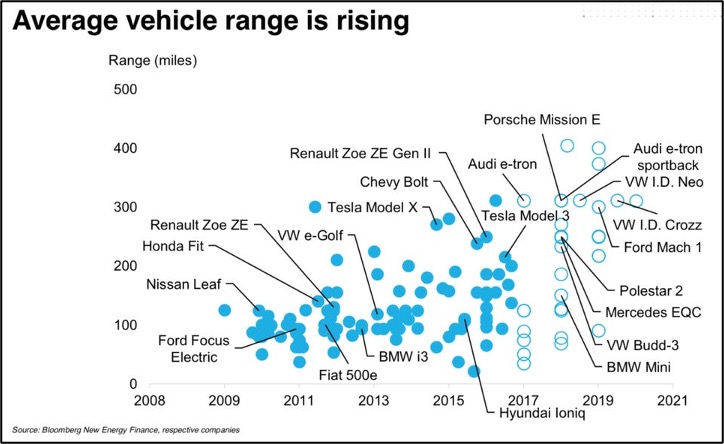CEEPR Working Paper
2023-01, January 2023
Siddhi S. Doshi and Gilbert E. Metcalf
Transportation is the single largest source of greenhouse gas emissions in the United States. Given that, a key element of federal climate policy is to shift personal transportation away from gasoline and diesel-fueled vehicles towards electric vehicles (EVs).
Swapping out gasoline and diesel vehicles with electric vehicles has raised a number of important policy questions, including, for example, how the federal government raises revenue for the Highway Trust Fund. Currently, all revenue from the federal motor vehicle fuel excise tax is earmarked for this fund. As more EVs are purchased, fuel excise tax revenue will fall. This has led to renewed interest in enacting a vehicle-miles-traveled (VMT) tax to replace lost motor vehicle fuel excise tax revenue.
Recent studies on the distributional implications of a VMT-Gas Tax swap assume that households shifting from gasoline or diesel-powered vehicles to EVs do not change their driving behavior. A recent paper by Davis (2019) challenges this assumption. Davis argues that “electric vehicles are driven considerably less on average than gasoline- and diesel-powered vehicles.” Davis correctly notes that “the less electric vehicles are driven, the smaller the environmental benefits from electric vehicle adoption.”
In addition to smaller environmental benefits, estimates of driving and market penetration of EVs in the future would influence EV-related policy decisions and analyses, with potentially important distributional implications. If higher income households are more likely to own EVs, and if they drive fewer miles upon switching from a gasoline or diesel-powered vehicle, then the burden of a revenue-neutral VMT-gas tax swap will fall more heavily on lower-income households.
While Davis makes an important point about the relevant counterfactual for EV driving behavior, we think the evidence contained in Davis’ data source—the 2017 National Household Travel Survey (NHTS)—is a bit more nuanced than it first appears. Our analysis of the same data suggests that EV driving range is a key factor in explaining differences in annual mileage for EVs versus gasoline or diesel-powered vehicles: if one focuses on long-range EVs, we find that the driving differences go away.
When not controlling for owner or vehicle characteristics, our initial results concur with Davis. We find that EVs are driven between 2,500 and 4,200 fewer miles annually on average than gasoline or diesel-powered vehicles. Plug-in hybrid vehicles are driven on average anywhere between 800 and 2,900 fewer miles than gasoline or diesel-powered vehicles. Conventional hybrids, on the other hand, are driven more than gasoline or diesel-powered vehicles by anywhere from 690 to 2,100 miles on average, depending on the measure of annual driving.
What explains the difference in driving between EVs and gasoline or diesel vehicles? One hypothesis is selection. Environmentally conscious drivers may simply drive less and prefer EVs. Drivers in urban areas, where people drive less, may prefer EVs. EVs may be secondary vehicles for some. While we cannot fully test for all these preferences, we use the available set of household-level and driver-specific information to test the selection hypothesis. We find that after controlling for selection variables, the estimated differences in driving between EVs and gasoline or diesel-powered vehicles becomes less negative.
However, sample selection does not fully explain the differences. Even after controlling for household, vehicle, and regional characteristics, EVs are typically driven less than gasoline and diesel-powered vehicles.
Another possible explanation of the lower annual VMT is battery range for EVs. Davis notes this but does not test this hypothesis. In our analysis shown in Table 1, we add an indicator variable for whether an EV has battery range of 100 miles or less. Not surprisingly, in all cases, EVs with short battery range are driven anywhere from 2,000 to 5,000 miles less than EVs with a high battery range. However, when comparing EVs to gasoline or diesel-powered vehicles, we find that long-range EVs are not necessarily driven less than internal combustion engine vehicles.

However, we must note that Teslas are the only long-range EVs in our data, so it is difficult to distinguish a Tesla effect separately from the range effect. Our controls for household characteristics, such as household income and location will capture some of the Tesla effect. Additionally, assuming that Teslas are preferred by environmentally conscious individuals that drive less, the Tesla effect would bias our result downward. This dataset may also capture many early adopters of Teslas, who are also likely to be drivers who drive less. Given all this, it is even more meaningful that despite a potential Tesla effect biasing our result downward, long-range EVs are not necessarily driven less than gasoline or diesel vehicles.
Once one accounts for battery range, the sharp difference in annual miles driven between EVs and gasoline and diesel-powered vehicles goes away for long-range EVs. With battery range increasing dramatically (see Figure below), focusing on longer-range EVs seems relevant for any research looking at the efficiency or distributional implications of policy to incentivize greater take-up of EVs. The distributional considerations are especially important for thinking about tax proposals for a VMT tax to replace in part or entirely the current motor vehicle fuel excise tax. Assuming that EVs are driven fewer miles than the vehicles they replace would bias such a revenue-neutral tax reform towards being more regressive, assuming EVs are disproportionately purchased by higher income households.

Figure 1. EV Range Over Time
It is also important to remember that the 2017 NHTS dataset is based on sampling conducted in 2016, 6 years before this paper was written. The EV environment has experienced massive improvements in terms of technology, infrastructure, and adoption since then. If we see disappearing VMT differences using data from 6 years ago, we should expect to see much better outcomes today and moving forward. In the end, a definitive answer to the question of whether EVs are driven differently than gasoline and diesel-powered vehicles may have to wait for the next release of the travel survey.
References
Davis, Lucas W. 2019. “How Much Are Electric Vehicles Driven?” Applied Economics Letters, 26(18), 1497-1502.
Doshi, Siddhi S. and Metcalf, Gilbert E. 2023. “How Much are Electric Vehicles Driven? Depends on the EV.” MIT CEEPR Working Paper 2023-01, January 2023.




